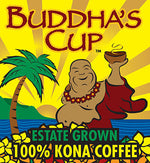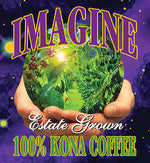Your tea underwent quite a journey before it ended up in your mug this morning.
From picking tea leaves to steeping the dried leaves, tea farmers put in so much time, love, and thoughtfulness into the process. Remember that the next time you indulge in a warm cup of tea.
Here, we do a thorough breakdown of how tea is made.
Picking Tea Leaves: Nature's Gifts Gathered

The best-tasting tea begins with the plant.
Tea plants are grown all over the world, from the Asian mountain ranges to the highlands in Africa.
However, due to different climates, soil conditions, and other factors, the flavor of tea will differ. Different regions also mean different harvesting times.
For more delicate and flowery flavors, tea leaves are harvested in the early spring, whereas the stronger and more mature-flavored black and oolong teas are harvested later.
Harvesting Methods
Tea leaves are harvested in two different ways: hand-picking and machine.
Hand-picking is the traditional harvesting method, allowing pickers to carefully select the buds and young tea leaves to ensure high-quality tea. Although still used to this day, this method does demand a lot of labor.
Different machines are used to harvest tea. Machines cut down on the amount of labor needed, limiting the conflict between labor and fair wages, but can damage tea leaves, creating low-quality tea.
Sources: National Library of Medicine
Tea Production Process

Before delving into the main tea processing methods, remember that different types of tea will undergo various processing techniques. Not every tea will experience the same level of oxidation or drying.
Source: UNESCO
Oxidation
Oxidation is a chemical reaction that occurs when things are exposed to oxygen. It changes the chemical composition of tea leaves, affecting their flavor, aroma, and strength.
Let’s break it down:
- Black tea is fully oxidized, creating dark leaves. This process involves soaking the leaves so they can fully darken.
- Oolong teas are partially oxidized, meaning their flavor profiles range from very rich to a more mellow green tea taste. This is done by exposing the leaves to air until they turn brown, before roasting them to stop oxidation.
- Green teas are mostly unoxidized but may experience little exposure to air throughout the harvesting process. The leaves are quickly exposed to heat to stop any oxidation.
- White tea is unoxidized.
Shaping (or Rolling)
Tea is shaped by hand and machine. Traditionally, it was done by hand to impress tea drinkers.
The shaping process takes time and varies based on the tea type. The leaves are twisted, balled, tired, pressed into flat needles, and sometimes caked.
Drying and Firing
Before drying, the tea leaves are sorted by size and color, creating tea grades and determining which leaves will make the highest-quality tea. This used to be done by hand but is now done by machines.
Then, teas undergo a drying and firing process to remove moisture, extending their lifespan.
Exploring the Art of Tea Blending

Tea blends are a combination of various ingredients, whether it’s various black teas or herbal mixes.
One you might be familiar with is the English Breakfast tea, which is made from a mix of Indian, Sri Lankan, and Kenyan black teas.
Interested in creating your own tea blend? Here are some tips:
- Make sure strong flavors are balanced out with complementing flavors.
- Keep it simple – adding too many different teas and herbs might overpower the taste.
- Try adding different herbs, spices, flowers, or even dried fruit.
- Choose a mixture of ingredients that you’ll enjoy.
A Guide to Steeping & Brewing Methods

The tea you buy should come with instructions on how long to brew and what temperature to use. High temperatures will dilute the flavor, while low temperatures won’t properly extract the flavors.
Our tip: use pure water.
You Might Like: How to Make Homemade Black Tea?
Savoring the Result from Cup to Soul

Immerse yourself in the tea-drinking experience and learn to value the traditions, benefits, and journey.
The Art of Mindful Tea Tasting
The tea experience starts the moment you open the package and inhale the amazing aromas. Each sip lets you taste all kinds of flavors, whether you prefer the richness of dark tea or the lightness of floral green tea.
No matter what you fancy, drinking tea will expand your palate.
Cultural Traditions and Rituals
Tea drinking is deeply ritualistic and varies by country.
It's a sacred act that can honor elders in traditional Japanese and Chinese ceremonies or foster community in places like Morocco, where tea is shared with all guests.
Tea also serves as a social bridge, offering a space for connection, especially among women.
Health and Wellness Benefits
Tea is rich in antioxidants, supporting your immune system, digestion, cognitive functions, and even slowing aging. It’s like a natural remedy!
Additionally, it can ease anxiety and depression, and its ritualistic nature helps establish a soothing routine.
Find your perfect wellness drink from Buddha’s Cup.
Enjoy the Tea Making Process

Every step in the tea-making process is done with love, care, and precision – ensuring the finest quality in every cup. As you brew the tea to your liking, you become a part of this tradition, enjoying the benefits of this beloved beverage.
Our Buddha’s Cup family produces High Mountain Grown 100% Kona Coffee and Tea on the Big Island of Hawaii. Contact us today and find your perfect cup of tea.
FAQs
Where does the process of making tea begin?
The tea-making process begins with the picking of tea leaves in different regions across the world. Leaves are either hand-picked or harvested by machines.
What is the process for making tea?
Processing begins with different levels of oxidation depending on the type of tea, and then shaping, and drying. Each of these steps will vary in intensity based on the variety (black, green, oolong, and white.)
Can I create my own tea blends?
Yes! It’s super easy to take your preferred type of tea and mix it with herbs, dried fruits, and other types of tea. Creating your own blend is a fun way to experiment with your tea-drinking experience!













